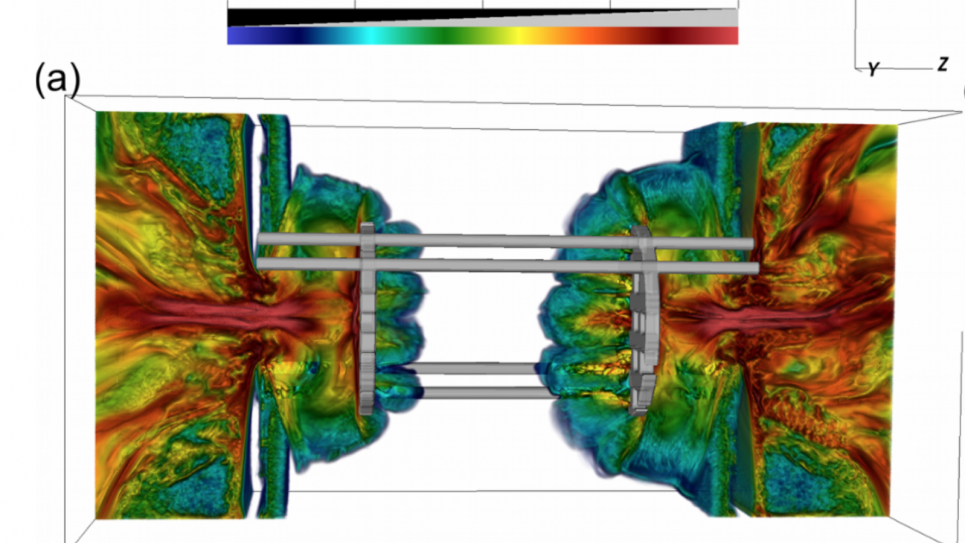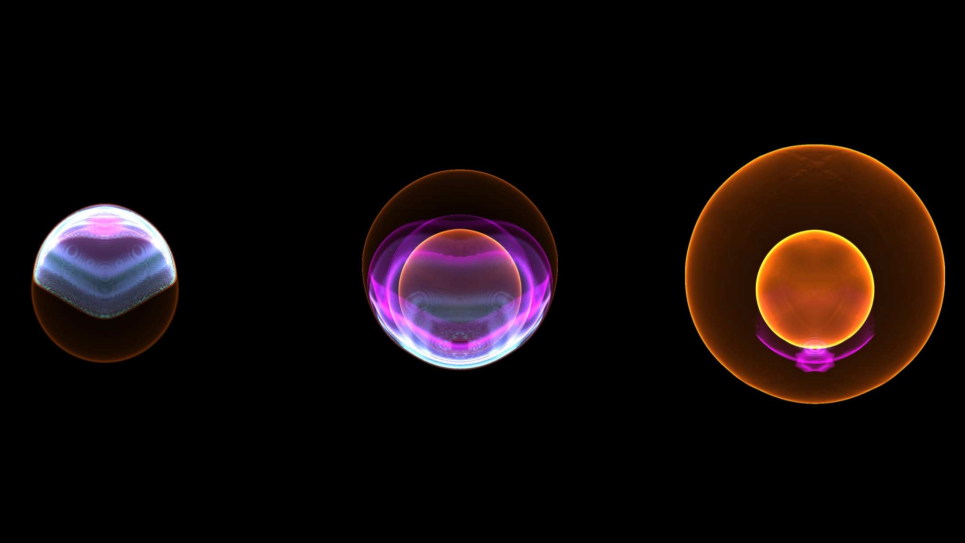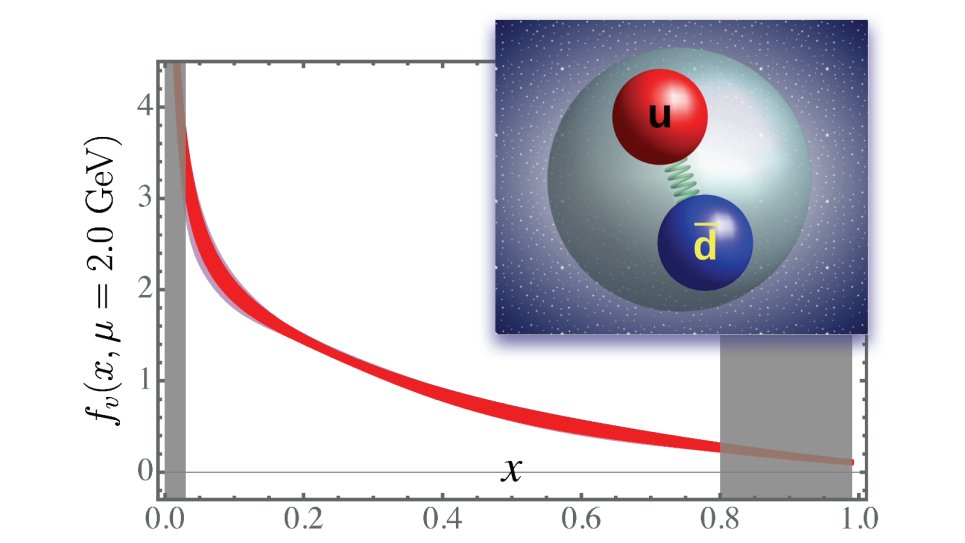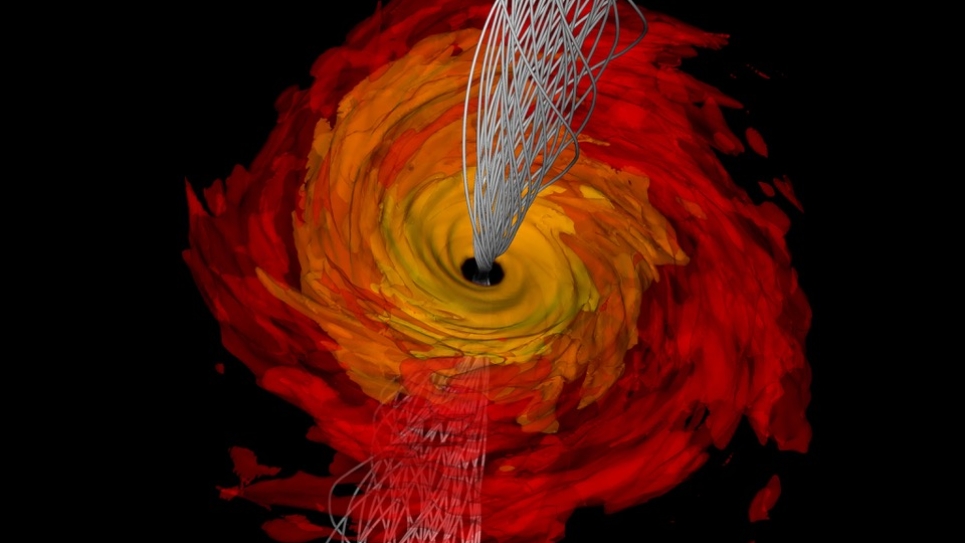
Simulations of Laser Experiments to Study MHD Turbulence and Non-thermal Charged Particles
Magnetic fields are ubiquitous in the universe. The standard theoretical model behind their origin is the amplification of tiny seed fields via turbulent dynamo, resulting in turbulent magnetized plasmas. These turbulent plasmas mediate the propagation and acceleration of non-thermal charged particles via scattering and second-order Fermi acceleration—a stochastic process whereby cosmic rays gain energy through scattering with randomly moving magnetized clouds. This project has both experimental and simulation thrusts. The experiments are designed to study the properties of magnetized turbulent plasmas and non-thermal particles in the laboratory.
The project has been awarded shot-time at both the Omega laser facility at the Laboratory for Laser Energetics at the University of Rochester, and the National Ignition Facility at Lawrence Livermore National Laboratory. These extremely powerful lasers allow researchers to produce magnetized turbulence at large magnetic Reynolds numbers, which is required for the nonlinear turbulent dynamo mechanism to occur. The experiments are designed and interpreted using validated simulations performed with the radiation-MHD code, FLASH; the FLASH simulations are vital to ensure the experiments achieve the desired flow properties. This project will undertake 3D FLASH simulations to capture the properties of the turbulence, and resolve the small spatial scales at which amplification occurs. FLASH simulations are also critical in determining the timing of experiment diagnostics, since the signals last only a few nanoseconds, and the interpretation of the experimental results.


